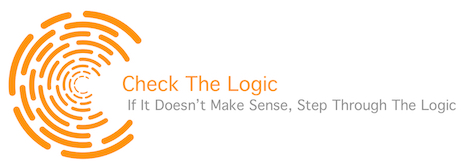You Don’t Have to Think Like a Psychologist to Navigate the Workplace

Instead of learning new jargon and frameworks smithed by industrial psychologists or Human Resources Theorists, trust your own experience. Most of the things you need to know about human behavior, you likely, learned in grade school.
Recall one of your sixth-grade classes. Unless you were homeschooled or tutored, you probably attended classes with several students systematically engaged in behaviors unrelated learning.
Some of the behaviors may have been good and others not-so-good, yet they were distinct. They were so distinct, one could use the behavior to classify each classmate as follows:
10 Types of People
- The Uninhibited Talker – This person misses social cues and doesn’t know when to stop talking. Some students and teachers see this person as intelligent because s/he spews lots of facts in which they are unfamiliar. (Most students tolerate the incessant talking; however, bullies are annoyed by this unsocialized behavior; they seem compelled to stop it.)
- The Busybody – This person works to learn everything they can about everyone they encounter. These gossipers, also, trade the true and false facts they obtain about others with the people around them. Master Meddlers, use their information to instigate conflicts.
- The Fiddler – whether it is an assigned task or not, fiddlers always seem to explore and touch things. Fiddlers don’t wait for an invitation. They invite themselves.
- The Show Off/Brown Noser – persons anxious to demonstrate something. Without being prompted, they try to show the whole world that they know the correct way to get something done. The most offensive ones are self-appointed bosses over everyone else.
- Mr./Ms. Prepared – this individual takes great pains to show others he is well prepared for class; he brings extra tools (pens, paper, etc.) just in case something goes wrong. Every unprepared individual he encounters is not a chance for him to share. Instead, it is an opportunity to highlight the fact that someone is unprepared.
- The Funster – a person who jokes around and tries not to work too hard.
- High Performer – reasonably, likeable individual that completes assigned tasks on time, behaves responsibly, and answers questions when asked.
- Worrywart – a character that perpetually voices his/her doubts about everything – performance, answering questions, etc.
- Bully – There are two types: A Type 1 Bully inflicts pain on others who appear weaker than him, without provocation; a Type 2 bully inflicts pain on others in order to correct the wrongs they see in society.
- Floater – a friendly and approachable person. He doesn’t make trouble for others; he works to get along with everyone.
6 Rules for Navigating the Workplace
Now that you recall the players, take these actions to navigate the adult equivalents:
- Become a Floater and High Performer. Focus on your own tasks. Know your business better than anyone else, but take time to talk to your colleagues.
- Lend an ear to the Uninhibited Talker, periodically. Listen to what that person has to say. Let him know when he has said something you didn’t know. And, thank him for sharing.
- Share information about yourself with the Busy Body. Be careful to share only general facts about yourself. Never say anything negative about anyone to or anywhere near this person. Remember to share career facts that will make you look good in the eyes of others.
- Invite The Fiddler to work on one of your projects, if s/he has mastered the craft of disciplined thinking. Sometimes this person can find unique ways of addressing an issue.
- Provide encouragement to the Worrywart. Helping to build this person’s confidence can win you a friend for life.
- Feed the Bully. Talk to your organization’s bully and incrementally provide him the names of your organization’s funsters. You may have to do this indirectly, using the organization’s Busybody.
References
https://www.uopeople.edu/blog/13-types-of-students-you-see-in-every-classroom/
https://www.shrm.org/resourcesandtools/hr-topics/people-managers/pages/managing-different-personalities-.aspx
https://www.superfriend.com.au/blog/article/how-to-effectively-engage-with-different-personality-types-in-the-workplace




